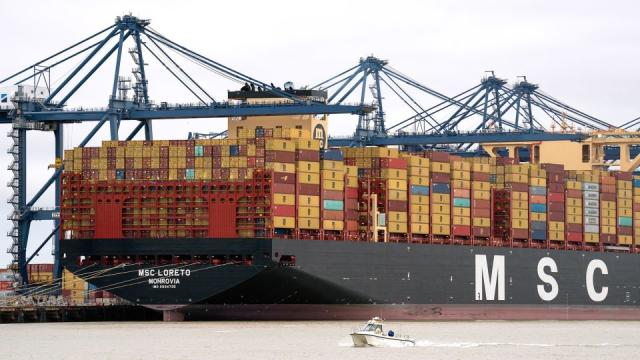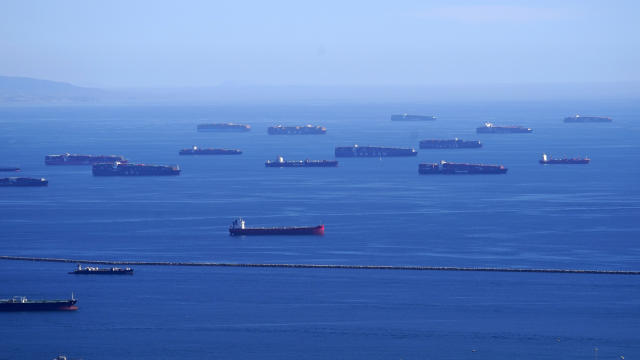Science Daily News | 07 Jul 2023

Views (101)

Nearly half of US drinking water may contain toxic 'forever chemicals'
Nearly half of U.S. tap water samples contain toxic "forever chemicals," substances used in hundreds of household items from cleaning supplies to pizza boxes to which broad exposure can carry serious health risks, according to a new study. The U.S. Geological Survey (USGS) study tested tap water samples from more than 700 residences, businesses and drinking-water treatment plants across the country for the presence of perfluoroalkyl or polyfluoroalkyl chemicals known as PFAS. PFAS are water resistant, meaning they do not break down in the environment and last in human bodies for years.

By Rachel Nostrant
(Reuters) - Nearly half of U.S. tap water samples contain toxic "forever chemicals," substances used in hundreds of household items from cleaning supplies to pizza boxes to which broad exposure can carry serious health risks, according to a new study.
The U.S. Geological Survey (USGS) study tested tap water samples from more than 700 residences, businesses and drinking-water treatment plants across the country for the presence of perfluoroalkyl or polyfluoroalkyl chemicals known as PFAS.
At least one such synthetic chemical was detected in 45% of the samples at levels exceeding benchmarks and U.S. proposed regulations, the researchers said.
PFAS are water resistant, meaning they do not break down in the environment and last in human bodies for years. Developed in the 1940s with the creation of Teflon, a non-stick cookware coating, today they are used in everything from clothing to plastic products.
Previous studies have measured PFAS in ground water, reservoirs and water treatment plants. But analyzing tap water allows for a more accurate assessment of what people are drinking, said Kelly Smalling, a USGS hydrologist who led the research.
Exposure to high levels of PFAS can disrupt hormones, disturb liver function, increase the risk of kidney or testicular cancer, reduce birth weight in infants and compromise the health of pregnant women, according to the U.S. Centers for Disease Control and Prevention.
Tests exist for a fraction of the 12,000 known types of PFAS. The study samples, which came from public supplies and private wells between 2016 and 2021, were tested for 32 types.
There was no difference in PFAS exposure between samples from private wells and the public supply, which "was very surprising,” Smalling said.
Public water supplies are regulated by the Environmental Protection Agency while private wells are not.
Compared with people in rural areas, those in urban areas are at higher risk of exposure to PFAS in drinking water, the study found.
In March, the EPA proposed the first-ever national drinking water standard for six PFAS. It would require monitoring of public water systems and disclosure when PFAS levels exceed limits.
Almost $10 billion was directed to help communities reduce PFAS and other chemical contaminants as part of the Biden administration’s Bipartisan Infrastructure Law.
(Reporting by Rachel Nostrant; Editing by Nancy Lapid and Howard Goller)
When will Ariane 6 fly? Europe's new heavy-lift rocket battles delays as Ariane 5 era ends
Ariane 6 may launch later this year to provide fresh European access to space, but it faces stiff competition from veteran US competitor SpaceX.

As Europe's workhorse Ariane 5 rocket settles into retirement, its successor isn't yet ready to fly.
"The Starship rocket, when it took off, it had security conditions that we would not have accepted in Europe," Israël said in last month's interview.
The Ariane 5 rocket makes its penultimate launch on April 14, 2023, with the Jupiter Icy Moons Explorer (JUICE) spacecraft on board. (Image credit: ESA/M. Pédoussaut)
Ariane 6 is years behind its initial forecasted first launch in 2020, which was delayed by issues including the COVID-19 pandemic and supply chain hiccups.
RELATED STORIES:
Shipping has sailed under the radar when it comes to climate action. That could all change this week
The cellphone in your hand; the shoes on your feet; the chair you’re sitting on – there’s a good chance these made their way to you on one of the gigantic cargo ships that criss-cross the world’s oceans every day.

As a result, its climate impact is enormous: It produces around 3% of all human-caused planet-heating pollution. And experts say the industry has flown under the radar when it comes to climate action.
That could change this week.
In an unassuming brown building on the River Thames in London, representatives from the 175 member states of the International Maritime Organization, the UN body that regulates global shipping, are gathered for a highly anticipated set of negotiations expected to conclude on Friday with a commitment to dramatically cut the industry’s planet-heating pollution.
What’s decided here will have implications for the world’s ability to tackle the climate crisis. Some experts say – if the IMO gets it right – it will be the “climate deal of the decade.”
Even though the amount of planet-heating pollution shipping currently produces is more than the whole of Germany, it “has been ignored for a long time,” said Faïg Abbasov, the director of shipping at the non-profit Transport & Environment.
The industry was not directly included in the Paris Agreement on climate, nor does it currently have a pledge to reach net-zero emissions – which would mean removing from the atmosphere at least as much planet-warming pollution as it emits.
One reason that shipping has received less scrutiny than other transport-related industries, like aviation, is that few people have direct contact with it, Abbasov told CNN.
“Maritime space is a bit of a Wild West because ships are out of sight, out of mind,” Abbasov said.
The industry’s current climate commitment is to cut levels of planet-heating pollution in half by the middle of the century, compared to 2008 levels – ambition levels that have been criticized, including by UN secretary general António Guterres, as inadequate given the scale of the climate crisis.
Shipping organizations deny a lack of ambition. Natasha Brown, the head of public information services at the IMO, said mandatory energy efficiency measures were introduced back in 2011. “The focus has been on cutting emissions for more than a decade,” she told CNN.
The industry “takes its responsibility to reduce [its climate impact] very seriously,” said Stuart Neil, director of strategy and communications at the International Chamber of Shipping, the industry’s main international trade association.
The negotiations are “perhaps the most significant moment in the shipping climate debate,” Abbasov said.
John Maggs, the president of the Clean Shipping Coalition, went even further. “If they get it right, probably it will be the biggest climate deal of the year, if not the decade,” he told CNN.
The key question is what the final commitment will look like.
But certain countries, including China, India and Brazil – those that tend to ship a lot of raw materials, often over long distances – have been pushing back, arguing ambitious action could affect trade and undermine their economies, said Abbasov.
In response, climate experts say these are short term costs and are dwarfed by the costs of tackling the climate crisis in these same countries.
Maggs said on Monday that what was in the draft documents fell short of the strong targets he and others are pushing for. They included a commitment to reach net zero by 2050 and interim targets for a 20% reduction in emissions by 2030 and 70% by 2040.
Ambitious interim targets are vital, Maggs said. “Absolutely without a shadow of a doubt, the 2030 target is the most important,” he said. Without a strong pledge, “all that’s going to happen is everybody’s going to sit on their hands for another 10 years,” he added.
Shipping is often put in the category of industries that are very hard to make climate-friendly, because there are few easily available alternatives to the dense, tar-like heavy fuel oil on which ships run. Cargo ships are difficult to electrify because the batteries required to propel them across oceans would be enormous.
There remains a “collective action” problem, Abbasov said. Companies don’t want to incur costs to make changes if others are still doing nothing. “The only way from our perspective to change that is through mandatory government regulation,” he said.
The idea of a carbon levy on shipping’s carbon pollution is also gaining traction. The idea is to both incentivize climate action and provide a fund that could be directed toward developing countries, which are facing the most significant impacts of the climate crisis, despite doing the least to cause it.
The IMO will publish its final strategy document, including revised climate commitments on Friday.
If the shipping industry fails to make significant climate commitments this week, it’s going to have big implications for global climate ambitions, Maggs said. “Shipping is a really, really big piece of the puzzle.”
“At the end of the day, we’re all going to have to go to zero,” he added. “If the shipping industry makes that decision today, it’s going to be a relatively smooth path. If it makes that decision in 10 years time it’s going to be be like dropping off a cliff.”
New study reveals what can calm snakes in times of stress — and it’s surprisingly relatable
Rattlesnakes showed signs of reduced stress when they were kept with a companion, according to a new study. It’s evidence that reptiles — much like humans — rely on their social ties to stay calm.

Snakes: They’re just like us — at least in one respect.
The study authors focused their research on Southern Pacific rattlesnakes, or Crotalus helleri, which are common in Southern California. They found the snakes that went through stressful situations in the presence of a companion exhibited reduced heart rates compared with those that endured the stress alone.
“Snakes and reptiles are really interesting because I think they’re often overlooked in their behavior,” Martin said. “People are often really afraid of snakes … (but) they’re not so different from us. They have moms that take care of their children. They’re able to reduce their stress when they’re together. That’s something that we as humans do, too.”
Martin worked with Dr. William Hayes, an earth and biological sciences professor at Loma Linda, to design the study.
It was Hayes’ idea to explore the snakes’ stress response, Martin said.
The research team removes rattlesnakes for people who don’t want them near their homes, she said, so Hayes spends significant time driving around with buckets of the reptiles in his car.
Another colleague suggested this behavior could be a sign that the snakes were engaging in social buffering, and their team designed an experiment for the rattlesnakes.
They used 25 Southern Pacific rattlesnakes captured from the wild, including some that came from lowland areas and others from the mountains. (Lowland Pacific rattlesnakes are known to overwinter together or spend the cold months in one another’s company, while mountain snakes do not.)
The researchers placed the snakes in 19-liter plastic buckets, then sealed off and struck the containers with pipes to simulate a stressful environment. They used an over-the-counter heart rate monitor to track the animals’ stress levels while testing the subjects in three ways: alone, with a companion, and with a rope about the same size as a fellow snake (to ensure that the presence of another snake, and not just another object, was causing the reduced stress response).
They found that the snakes’ heart rates were substantially reduced when they were placed in the bucket with a companion compared with being alone or with the rope. And that result held true for both the lowland and mountain-dwelling snakes as well as males and females.
These findings could have broad implications not only for Pacific rattlesnakes but also for reptiles in general, according to the study authors.
Martin and Hayes said similar social buffering behavior could exist across numerous snake species as well as in lizards, crocodiles and other scaled creatures.
“Nobody’s really looked at (social buffering) in reptiles,” Hayes added.
Dr. Erika Nowak, a herpetologist and assistant research professor at Northern Arizona University’s Center for Adaptable Western Landscapes, agreed that research into snakes’ social behaviors had been limited until recently. She was not involved in the new study.
“I’m so pleased to see a well-conceived study that adds to our understanding of sociality in rattlesnakes,” Nowak said via email. “Their sociality is only ‘cryptic’ because we scientists haven’t assumed that they (are) fully social animals, and thus we haven’t always carefully looked for behaviors that support sociality.”
This evidence of snakes engaging in social buffering aligns with other social behavior she’s observed in her own research, Nowak added.
“I’ve observed two wild male western diamond-backed rattlesnakes who hibernated near each other, traveled together during the active season, and even defended each other from me,” she said.
“(T)his (and other) research clearly shows that snakes could benefit from having cagemates,” Nowak said.
Researchers also said they hope this study will have a positive impact on the public’s perception of snakes. They know most people aren’t wild about the reptiles — especially the venomous variety.
“Please don’t hype these as dangerous animals. Obviously, they are. But they’re only trying to protect themselves,” Hayes said. “They’re frightened of us. They’re reclusive animals. … So we would really appreciate a more positive emphasis on snakes.”
Nations set to agree on shipping emissions cuts but fall short of aligning with climate goals
Maritime nations have been finalizing a plan Thursday to slash emissions from the shipping industry to net zero by about 2050 but experts warn the deal falls well short of what's needed to prevent climate catastrophe. Negotiators at the meeting of the United Nations' International Maritime Organization in London, seen as key to limit global warming to 1.5 degrees Celsius (2.7 degrees Fahrenheit) since pre-industrial times, are set to officially agree Friday for shipping emissions to reach net zero “by or around” 2050, rather than setting the date as a hard deadline. The draft plan also calls for shipping emissions to be slashed by at least 20% but aiming for 30% by 2030 and at least 70% but working toward 80% by 2040 despite a push from Pacific nations for more ambitious targets.

Maritime nations have been finalizing a plan Thursday to slash emissions from the shipping industry to net zero by about 2050 but experts warn the deal falls well short of what's needed to prevent climate catastrophe.
Negotiators at the meeting of the United Nations' International Maritime Organization in London, seen as key to limit global warming to 1.5 degrees Celsius (2.7 degrees Fahrenheit) since pre-industrial times, are set to officially agree Friday for shipping emissions to reach net zero “by or around” 2050, rather than setting the date as a hard deadline.
Environmentalists say the draft plan would see the shipping industry use up its carbon budget — a calculation of the amount of carbon dioxide various industries and countries can emit before global warming limits are breached — by 2031.
“This week’s climate talks were reminiscent of rearranging the deckchairs on a sinking ship,” said Faig Abbasov from Transport and Environment, a Brussels-based environmental nongovernmental organization, who's part of the meetings in London.
“The U.N. had the opportunity to set an unambiguous and clear course towards the 1.5 C temperature goal, but all it came up with is a confusing fudge,” Abbasov said.
The International Chamber of Shipping, which represents 80% of the world’s commercial fleet, was concerned about the “lack of focus” on how to make the targets a reality.
“The new fuels that we expect the majority of the shipping industry will have to use, we anticipate they’re going to be two, three or four times more expensive than the fuel oil which we use today,” said Simon Bennett, deputy secretary-general of the group. “So, what we need to do is to create a market for these new fuels.”
Options range from methanol, ammonia, hydrogen, sustainable biofuels and synthetic fuels, as well as technology like carbon capture, but these are currently not scalable.
“In the shipping industry, no one knows which horse to back,” Bennett said. “It’s still far from certain which of these options will actually turn out to be the most viable.”
Except for some experimental projects, he said there are basically no fuels available to the industry that don’t emit greenhouse gases.
“Companies who are going to provide emission reduction equipment want a clear signal so they know it is safe to invest in these technologies. This is why it is important to have ambitious 2030 targets,” said John Maggs, shipping policy director at Seas At Risk and president of the Clean Shipping Coalition, who was also part of the meetings.
“The only way to unlock this investment in clean shipping technologies would be to have a really strong 2030 target. A weak 2030 target would definitely be a lost opportunity,” he said.
After the IMO plan is adopted, the major port nations such as the U.S., China and Korea could move things along by setting even tougher limits within their jurisdictions, said Madeline Rose, senior climate director with the advocacy group Pacific Environment.
“As we’re seeing with cars and trucks, when major markets set firm emission standards, the broader market responds,” Rose said. “The solutions exist. It’s a matter of creating policy conditions that force this industry to invest in those solutions rather than pursue profit based on cheap fossil fuels.”
Targets are revised every five years, which experts say means that the industry is likely to contribute to global warming significantly before plans are reviewed once more in 2028. The IMO’s previous target was for the shipping industry to cut its emissions by at least half from 2008 to 2050.
Shipping currently accounts for almost 3% of greenhouse gas emissions, according to the IMO.
Ships carry around 90% of all traded goods globally and are a major source of pollution, emitting around one billion tons of greenhouse gas every year. This is roughly the same amount as 243 coal plants. Around 40% of all products transported on ships is the coal, oil and gas that heats up the atmosphere when burned.
___
Arasu reported from Bengaluru, India. Courtney Bonnell in London and John Flesher in Traverse City, Michigan, contributed to this report.
___
___
Oil giant Shell warns cutting production 'dangerous'
The world's need for fossil fuels is "desperate", Shell's chief executive told the BBC.

Cutting oil and gas production would be "dangerous and irresponsible", the boss of energy giant Shell has told the BBC.
Wael Sawan insisted that the world still "desperately needs oil and gas" as moves to renewable energy were not happening fast enough to replace it.
He warned increased demand from China and a cold winter in Europe could push energy prices and bills higher again.
Mr Sawan angered climate scientists who said Shell's plan to continue current oil production until 2030 was wrong.
Professor Emily Shuckburgh, a climate scientist at the University of Cambridge, said firms such as Shell should focus on accelerating the green transition "rather than trying to suggest the most vulnerable in society are in any way best served by prolonging our use of oil and gas".
Head of the UN António Guterres recently said investment in new oil and gas production was "economic and moral madness".
Mr Sawan told the BBC: "I respectfully disagree." He added: "What would be dangerous and irresponsible is cutting oil and gas production so that the cost of living, as we saw last year, starts to shoot up again."
The world is in a race to ditch fossil fuels in favour of greener alternatives as globally leaders have pledged to keep the world from warming by more than 1.5C this century.
Many countries do not have the infrastructure to move to more sustainable forms of energy.
Mr Sawan said an international bidding war for gas last year saw poorer countries like Pakistan and Bangladesh unable to afford liquefied natural gas (LNG) shipments that were instead diverted to Northern Europe.
"They took away LNG from those countries and children had to work and study by candlelight," he said. "If we're going to have a transition it needs to be a just transition that doesn't just work for one part of the world."
Claire Fyson, co-head of climate policy at Climate Analytics, a global science and policy institute, told the BBC: "The idea that it's a choice between our addiction to fossil fuels or working by candlelight is a gross misrepresentation of reality, when we know renewables are cleaner, cheaper and better for public health."
The head of the International Energy Agency, Fatih Birol, has said that "if governments are serious about the climate crisis, there can be no new investments in oil, gas and coal from now".
Here are some energy saving ideas from environmental scientist Angela Terry, who set up One Home, a social enterprise that shares green, money-saving tips:
Get a water-efficient shower head free of charge from your water company and use showers rather than baths
Consider loft insulation, which she says costs around £460 for a typical semi-detached home and could save £355 a year on gas bills
Hang out washing instead of using a tumble dryer
Use windy days to feel where draughts are in the house. Wetting the back of your hand helps to locate them, then use insulation or draught-proofing tape
Shell has a long history and a headquarters in the UK. But Mr Sawan said a lack of clarity and stability on energy policy and taxation risked making the UK a less attractive place to invest compared with more welcoming countries. The UK has increased tax on UK-derived profits from 40% to 75% until 2028 unless oil and gas prices fall below thresholds for a sustained period - which most energy experts doubt will happen.
The UK currently imports more than half of its oil and gas - and that proportion is expected to rise without renewed investment in the North Sea. Shell recently decided to sell its stake in a major new undeveloped oil field at Cambo.
"Ultimately the government needs to make a call as to their views on imported versus domestic production," said Mr Sawan.
"When you do not have the stability you require in these long-term investments, that raises questions when we compare that to other countries where there is very clear support for those investments."
Mr Sawan was also keen to stress the warm welcome extended to the company by the New York Stock Exchange at a recent investors' meeting where they laid out their plans to cut costs and maximise profits.
"The welcome we had there was exemplary. The Shell flag was waving next to the New York Stock Exchange flag," he said.
He said that the officials there had underlined his feeling that the US was more supportive of oil and gas companies.
"They said we continue to value a company that provides us the energy we desperately need. That resonated with me as a person who comes from Lebanon where we are starved of energy."
Mr Sawan did not rule out moving Shell's headquarters and stock market listing to the US. American oil companies command higher prices for their shares - Exxon Mobil for example is worth 40% more than Shell per dollar of profit.
"There are many who question whether that valuation gap can only be bridged if we move to the US. A move of headquarters is not a priority for the next three years."
But after that? "I would never rule out anything that could potentially create the right circumstances for the company and its shareholders. Ultimately, I am in the service of shareholder value," he said.
Although Shell says it has no plans to move in the short term, Mr Sawan's comments will add to fears that London's stock market is losing its lustre as a venue for multinational companies to raise money after technology darling Arm Holdings recently announced plans to move its primary listing to the US.
A move by the UK's most valuable company to the US would seriously dent Britain's financial prestige and cost jobs in the financial services sector.
0 Likes
